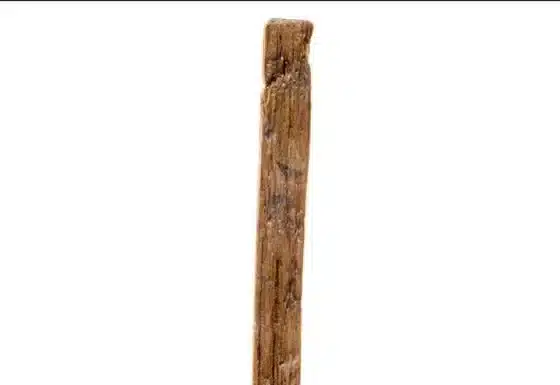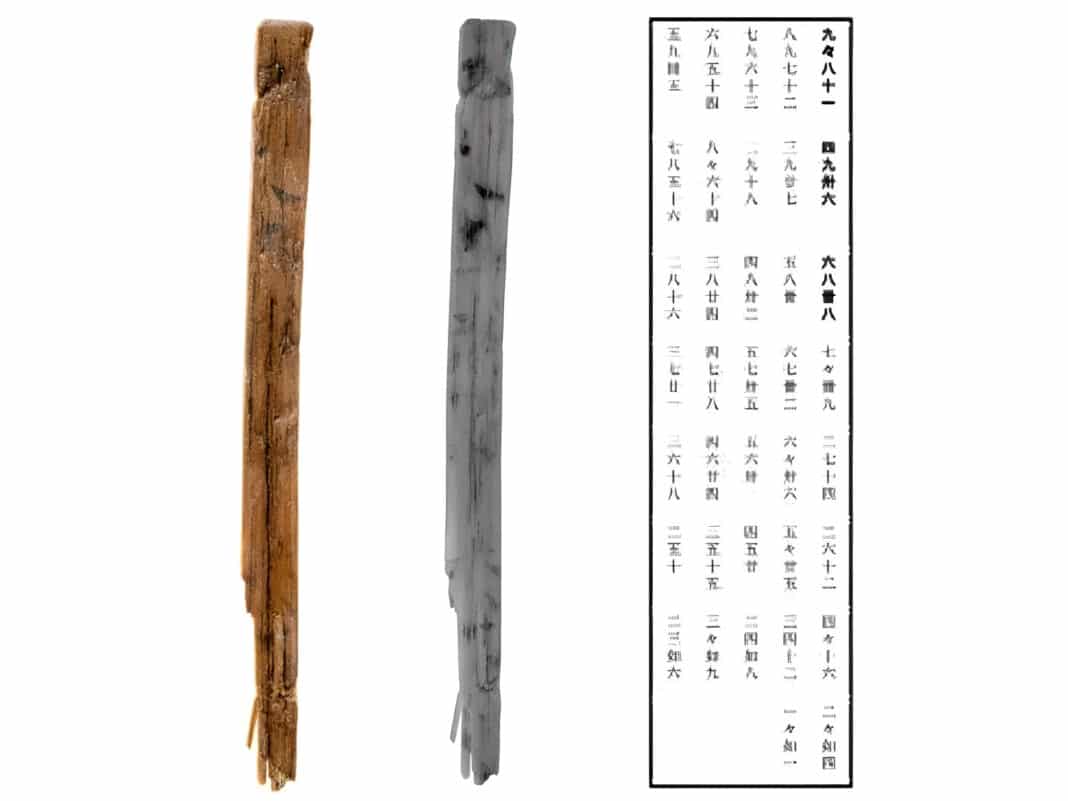Japanese researchers have uncovered a 1,300-year-old wooden tablet that appears part of Japan’s oldest known multiplication table.
The discovery, made by the Nara National Research Institute for Cultural Properties, came after archeologists studied a 2001 artefact found at the site of Fujiwara-kyo, Japan’s imperial city, from 694 to 710 C.E., believed to have been the office of the “Emon-fu,” the guards’ bureau responsible for security and administrative duties within the central government.
The fragment, measuring 16.2 centimetres long and 1.2 centimetres wide, was initially difficult to decipher due to the irregularity of the characters.

Initially thought to be a practice tablet, further investigation using infrared imaging revealed key equations, including “9 x 9 = 81,” “4 x 9 = 36,” and “6 x 8 = 48,” inscribed in kanji (Chinese characters) and arranged in five rows from right to left—mirroring the layout of Chinese multiplication tables from the Qin and Han dynasties, which existed from the 3rd century BCE to the 3rd century C.E.
“If the multiplication table were complete, the wooden tablet would measure 33 centimetres in length with all the equations written out,” according to Kuniya Kuwata, senior researcher at the Nara National Research Institute for Cultural Properties. The tablet’s layout surprised Kuwata:
I initially thought Japanese multiplication charts only had two to three equations per line, so I was genuinely surprised to find one with so many, similar to those in China and Korea.
Kuniya Kuwata, the lead author of the study.
While earlier multiplication tables found in Japan were much more straightforward, often featuring only two to three rows, this artifact’s five-row style represents a more advanced form of mathematical recording.
Kuwata believes the Emon-fu likely used the multiplication table for administrative purposes, such as calculating taxes or organising government officials’ work schedules. There is also speculation that multiplication tables were used in designing massive burial mounds.






